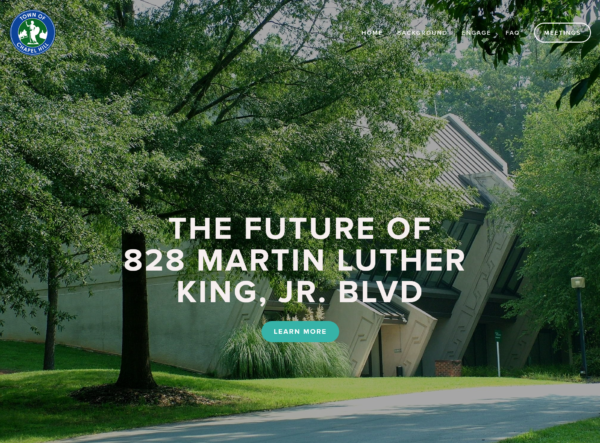In the 1960s and 1970s, clean soil was dug up from 828 MLK Jr. Blvd., and coal ash and other debris was used as structural fill. The police headquarters was built on the site in 1981. In the ensuing decades, we’ve learned that coal ash (which is the byproducts of coal combustion) is pretty nasty stuff, and the existence of the large piles of coal ash under the site was discovered in 2013.
In the decades since coal ash was dumped on the site, we’ve learned about the negative health impacts of coal ash, and with that better understanding of its risks have come new regulations that prevent dumping of coal ash in unlined containers as was done at the 828 site.
Over the past 10 years, the town has methodically researched the site, bringing in Hart & Hickman, an environmental consulting firm with expertise in addressing the challenges of polluted sites. After a number of analyses informed by testing at the site, the Town Council decided to enter the Brownfields program managed by the state Department of Environmental Quality (NCDEQ). Through this program, NCDEQ works with property owners to develop plans to address the human health risk of the pollution on the site so that redevelopment can take place. The Wegmans site in Chapel Hill is an example of a Brownfields site that was redeveloped.
What’s in the Brownfields agreement?
Yesterday, NCDEQ posted the draft Brownfields agreement and summary for the 828 site which are now available for public comment through July 30.
The details are on the department’s Public Comment webpage. DEQ also has a summary of everything that’s gone on so far. The tl;dr is this:
- The town can’t use the site for residential (which they already said they weren’t going to do.)
- The town can use the site for a municipal services center and parking but they can’t do that until the site has been remediated, either by enclosing the ash or by removing it
- The owner of the site has to submit a yearly report to DEQ on any new activities
- The soil cannot be disturbed under 18 inches. (In other words, once the site has been remediated it can be mowed and small vegetation planted.)
- Everything has to be approved by DEQ.
This is pretty much what we expected and similar to what occured at the Wegmans site in Chapel Hill, which is also a Brownfields site. Basically, you can build a building and asphalt on top of the site, but you can’t disturb the soil.
How do I make a public comment?
All public comments and public meeting requests should be addressed as follows:
Bruce Nicholson, Chief
Brownfields Redevelopment Section
Division of Waste Management
NC Department of Environmental Quality
1646 Mail Service Center
Raleigh, North Carolina 27699-1646

